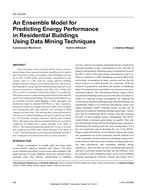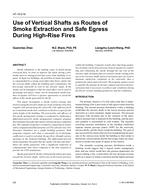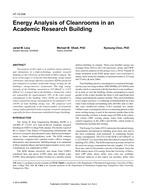-
-
Available Formats
- Options
- Availability
- Priced From ( in USD )
-
Available Formats
-
- Immediate download
- $16.00
- Add to Cart
Customers Who Bought This Also Bought
-

AT-15-034 -- An Ensemble Model for Predicting Energy Perf...
Priced From $16.00 -

AT-15-018 -- Use of Vertical Shafts as Routes of Smoke Ex...
Priced From $16.00 -

AT-15-006 -- Energy Analysis of Cleanrooms in an Academic...
Priced From $16.00 -

AT-15-010 -- Environmental Degradation Effect on Airtight...
Priced From $16.00
About This Item
Full Description
Modeling and simulation of energy consumption in 86%of the Ryerson University (RU) campus buildings is presented.Energy simulation models were developed for 16 major RyersonUniversity buildings. Commercially available softwarewas used for the prediction of energy use. All of the possiblesources and uses of energy in the buildings were accounted forin the modeling and simulation. Simulation result showed that26% of total energy was used by lighting, 19% of total energyused by plug load, and 4% of total energy was used by miscellaneousequipment. The remaining 51% of energy use was forheating, ventilation and air-conditioning (HVAC) systems. Inaddition, the Princeton scorekeeping method (PRISM), awidely used method in energy conservation studies, has beenused to analyze the same RU buildings for comparison andverification.
The base case simulation result and the Princeton scorekeepingmethod result were compared with the Campus Planningactual use bills for electricity, steam and deep lake watercooling (DLWC) demand for the Ryerson campus. The simulationresult underpredicted electricity use by 5.7% and steamconsumption by 6.3%, while the Princeton scorekeepingmethod underpredicted electricity use by 2.7%, and overpredictedsteam consumption by 6%.The average energy intensitywas determined as 1.04 GJ/m2 (91,576 Btu/ft2) for the 86% ofthe total area of Ryerson campus. Sensitivity analysis wasconducted by (1) adding a heat recovery system and (2) reducinglighting schedule.As a result, the former analysis predictedan annual energy saving of 5.6% for cooling load and 76% forthe heating load, while the latter analysis predicted an annualenergy savings of 10% for cooling load and 21% for electricitydemand, while the heating load increased by 14%.





